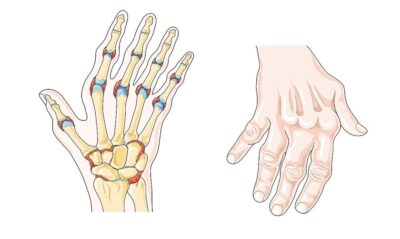Rheumatoid Arthritis: Living with Pain and Fighting Back
Rheumatoid arthritis (RA) isn’t just about sore joints. It’s waking up feeling like your body turned against you overnight as well as battling tiredness that no amount of sleep can fix. It’s explaining to people why you’re limping one day and fine the next.
RA is a disease where the immune system attacks healthy joints, causing swelling, pain, and over time, damage that can’t be undone. While there’s no cure, there are ways to manage it and slow it down.
The Daily Struggle of RA
One of the hardest parts of RA is that it’s unpredictable. Some days, you feel almost normal. Other days, even opening a jar or buttoning a shirt feels impossible. Morning stiffness can last for hours, making simple tasks like brushing your teeth a challenge. And then there’s the tiredness—like you ran a marathon in your sleep.
But the worst part? Most people don’t see it. Unlike a broken arm in a cast, RA doesn’t always show, making it tough for friends, family, and even doctors to understand what you’re going through.
What Causes RA?
Doctors don’t know exactly what triggers RA, but genetics, environment, and lifestyle all play a role. Smoking is a big risk factor, as are certain infections and even hormones. Women get RA more than men, and it often starts between 30 and 50—but it can happen at any age.
Managing RA: Solutions That Work
While medicines like DMARDs (disease-modifying drugs) and biologics help slow RA, lifestyle changes can also make a big difference. Here’s what can help:
1. Eat Foods That Reduce Inflammation
- Fatty fish like salmon (rich in omega-3s)
- Leafy greens and colorful veggies
- Nuts, seeds, and olive oil
- Less sugar and processed food (hard, but worth it!)
2. Stay Active, Even When It Hurts
Gentle movement helps keep joints flexible and muscles strong. Try:
- Yoga and stretching
- Swimming and water exercises (easy on the joints)
- Short walks and light strength training
3. Manage Stress and Get Enough Rest
- Practice deep breathing, meditation, or journaling
- Set a sleep routine and use supportive pillows
- Take breaks when needed—don’t push through pain
4. Find the Right Treatment Plan
- Work with your doctor to find the best medication
- Consider physical therapy for better movement
- Use heat and cold packs to ease pain and stiffness
The Mental Side of RA
Living with pain every day is exhausting—not just for your body, but for your mind too. Many people with RA feel sad or anxious, especially when their pain isn’t taken seriously. Finding a support group (online or in person) can make a big difference. Just knowing someone else gets it can help you keep going.
RA is tough, no doubt. But with the right treatment, lifestyle changes, and support, you can still live a good life. If you’re struggling, don’t be afraid to speak up—whether to your doctor, your loved ones, or a community of people who understand.
Explore more about your health here. Click Me

